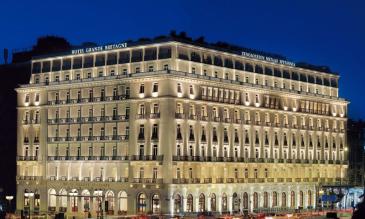16G seats
These seats are used for transport category airplanes and are meant to withstand withstand 16 times the force of gravity. They meet the 9g requirements of Sec. 25.561 alongside with the dynamic requirements of Sec. 25.562. They are tested in a manner that simulates the loads that could be expected in an impact-survivable accident. Moreover, creating a seat to withstand more than 16g’s wouldn’t make sense, since any force greater than that would not be survivable. This is why these seats are commonly referred to as 16g seats.
ABP
Able Bodied Passenger. A passenger who can be chosen to sit near the emergency exit on a plane.
AC Power
AC actually means alternating current. It’s the exactly same type of power that comes out of the wall in your home or office. Thus, if your seat is fitted with AC Power, you need nothing else but the standard wall power adapter which your laptop is equipped with. Generally speaking, the power on the plane is of 110V AC and features a semi-universal socket. Sometimes it’s a two-prong outlet, and sometimes there’s a grounding plug.
Adjustable Headrests
The majority of the long-haul planes have seats equipped with adjustable headrests in all classes which enables the traveler to adjust allowing the passenger to adjust the headrest for more cosiness.
Air Conditioning Nozzle
It may be tilted as well as adjusted by the traveler to induce or reduce the output. It is commonly found on almost any narrow-body plane and left out on wider ones.
ASM
Available Seat Miles. This standard industry measurement of airline output refers to a flight’s passenger carrying capacity. It considers an aircraft seat flown one mile, whether occupied or not. So, it is determined by multiplying the number of seats on a plane by the distance traveled in miles. Therefore, an plane fitted with 100 passenger seats that has traveled a distance of 100 miles will generate 10,000 available seat miles. It is used to estimate an airline’s capacity to transport passengers.
ASK
Available seat kilometers. This transportation standard is determined by multiplying the number of seats on an aircraft by the distance traveled in kilometers. It is also used to estimate an airline’s capacity to transport passengers.
AVOD
Audio and Video on Demand is a system that permits its users to select and watch or listen to video or audio content on demand. There are airlines that offer AVOD as in-flight entertainment to passengers through individually controlled video screens embedded in seat-backs or armrests. This system is also provided by portable media players. AVOD systems existing on planes offer the travelers the possibility of choosing a certain audio or video content and play it on demand with all its inherent options such as fast forward, rewind and pause. AVOD gives you the opportunity to control the pace you choose to watch a film or listen to an album.
Baby Bassinet Location
Baby bassinets are commonly situated in the first row behind a bulkhead. They normally provide greater seat pitch, and are highly desirable due to the extra leg room. They are specifically designed for passengers traveling with infants so, unless you are flying with a baby, you may be re-assigned to a different seat if another family checked-in with a specific demand for a bassinet. Also, carriers frequently provide bassinets (after having been requested beforehand) for passengers who fly with babies, especially on long-haul flights.
Bulkhead
A bulkead in actually a rigid partition in a plane. It is is practically a dividing wall between cabins on long haul flights and in case of short flights, it is commonly a sliding curtain. A bulkhead is therefore a divider which separates the classes or sections of a plane. You may find more information on bulkhead in our article about The Advantages and Disadvantages of Bulkhead Seats.
Bumped
A specific term used to refer to a passenger being offloaded from a flight. Airline companies usually overbook their flight because they need to compensate for the passengers that do not show up. Getting bumped from a flight greatly depends on the moment you officially check-in for your flight, so they best way to avoid this is to make an effort to arrive early. You may find more information on your rights in case you get bumped from a flights in our two articles dealing with oversold flights in US as well as Europe.
Cabin
This is the inside area of the aircraft. Commonly, there are separate cabins for First Class travelers, Business Class travelers and even one or more cabins for Economy Class travelers.
Call Button
A button that will alert a flight attendant to assist passengers.
Cigarette Power
It also known as DC Power Cigarette. This is the same type of power that is provided in your car, with what is yet commonly names cigarette lighter. You’ll need a cigarette power adapter if you want to use this type of power with your laptop. Still, Cigarette and EmPower adapters are available in all IT shops.
Closet
A closet in more than often reserved for First Class passengers. It is a limited section which is designed to garment bags or other odd-shaped items to be hung. The flight attendant is the one who decides on who and where to hand their items in the closet.
Cradle/Recliner Seat
This is a seat that reclines as far as 160 degrees from the seat base. They’re quite cosy in case of shorter-haul flights but they may only allow you to relax. Most of the passengers consider that it is quite difficult to sleep in them. They do not lie back as much as the Lie-flat and Flat Bed Seats do and they are only available in Business Class of some carriers.
Crew Rest
It is a specific division on the plane which is specially reserved tfor he Flight Attendants or Pilots as a rest area. It is common on long-haul flights.
DC Power
DC actually means direct current and it is the type of power that you get from a battery. Also, it exactly the same type of power port which may be found in practically every car. On a common plane, it bears 15V DC Power at up to 75 watts per outlet. So, unless you have a special adapter, you may not be able to use your laptop with it.
Domestic flights
This is airline jargon referring to a flight that does not go beyond the borders of a country. This site refers to domestic flights as ones in the USA.
Emergency Equipment
Oxygen containers, rafts, flashlights, and other emergency equipment that is often stored in a designated overhead bin, which can make it hard to find room for your bags if this equipment is directly above your seat.
Emergency Exit
A structure specially designed for emergencies. In case of planes, it is a full-sized exit door just. Most of the times there is an emergency slide placed into the door. This feature generates a protusion inside the aircraft. Such a lump may be quite inconvenient to the seat located beside the emergency exit door as it trespasses your own comfort zone.
EmPower®
Aircraft power adapter. It is, in fact, is the in-seat power system which you are more than likely to encounter on every contemporary aircraft. The system is restricted to 75 watts and features 15V DC power. You’ll need a special EmPower adapter in order to be able to make use of this system, or you may employ a cigarette power adapter.
Exit Row
This is a row of seats located next to an emergency exit. These rows may also be located next to overwing exits or even full-sized exit doors. If an exit door or a window exit is placed in the row you are sitting in, the whole row is nominated as the exit row.
FA
Flight Attendant
FEBO
Acronym for Front Even, Back Odd. This is a method used by American Airlines when taking meal orders in premium class based on flight number. In case of an even flight number the meal order is taken from the front while with odd flight numbers, the meal orders are taken from the back. You may keep this in mind when choosing your seats.
Flat Bed Seat
This seat goes to a perfectly horizontal position when fully reclined. Thus, it creates a fully flat bed. Such a seat will only be available in Business and/or First Class. They are widely praised by passenger as they are the most comfortable for sleeping.
Foot Cutout
There are bulkheads which have a small cutout at foot level. This small enlargement enables your feet to enjoy some extra space.
Foot-rest / Leg-rest
This device is frequent on international flights and permits the passenger to have one of his/her legs or feet supported and therefore relaxed. Business or First Class passengers will more that frequently enjoy this advantage as it is not normally found in Coach or Economy.
International Flights
This is airline jargon referring to a flight that goes between two countries. We refer to International flights as the ones that travel outside the US. This term is used to separate International Flights from Domestic Flights.
Jump Seat
It denotes a separate seat for flight attendants and crew members who are not operating the aircraft. The passengers are not permitted to use these seats and they are employed during take-off and landing.
Leg-rest
See Foot-rest.
Lie-Flat Seat
Even though its name would make you think that the seat would lie completely flat, it doesn’t actually. Its back as well as leg-rest recline at a slight angle. Some seat recline as much as 172 degrees. Passengers frequently consider that these seats are tremendously cosy if your plan to unwind and work. On the other hand, they are not too helpful for sleeping or even catching a wink due to its inconvenient angle when placed in the fully reclined position. This seat will only be available in Business and/or First Class.
Long Haul
This term refers to a flight that lasts for more than 4 hours. Passengers greatly depend on the roominess as well as cosines of their environment when taking on long haul flights.
Lumbar Support
This is a device that is meant to support to the muscles and the lower back. It is ususally built in a seat and may be adjusted manually or even electronically dependeding on the needs of the passengers. This option will normally be available in Business and/or First Class.
Misaligned Window
In this case the seat is not perfectly aligned to its adjacent window. Sometimes, there is even a seat between two window. You won’t be able to enjoy the view in this seat as you’ll need to make an extra effort in order to get a good view.
Missing Window
Sometimes a seat, despite its location beside a wall and despite having been advertised as as window seat, is placed next to a wall devoid of anything but white paint. The window is missing in this case because the space was needed for the wires as well as any other connections running behind the uninspiring wall.
Op-Up
Acronym for Operational Upgrade – a technical term used for instances when all the tickets in the Economy section have been over-sold but there are some available seats in a superior class. So, the gate agent is compelled to move the passenger from the Economy class to a Business/First class cabin. This “on the house” complimentary upgrade is very rare, though.
Overhead Bin
A common compartment located above the seats which is meant to store the luggage of the passengers. There are some restrictions in so far as baggage size and weight is concerned, so it’s good to check them out before your depart.
Overhead TV
Just as its name informs you, this TV-set is placed above the heads of the passengers every three or four rows so that the passengers in these seats may watch it. Of course, they will all watch the same movie or program but they will be able to have the audio in their own language.
Over-wing exits
These exits are meant to allow passengers to evacuate onto the wing. They are smaller than the standard emergency exits existing on a plane. Their size does not allow too many passengers to evacuate at the same time so the have a limited evacuation capacity. They are usually fitted on planes whose evacuation capacity at the main doors is insufficient.
Personal TV
A miniature TV placed right at your seat. You are the possibility of selection your own films or programs.
Pilot Rest
A section from the plane specially reserved for the pilots to rest on long haul flights. This area is customarily located in the First/Business Class section.
Power Port
It is normally fitted in the seat arm rest and allows your to plug in various electronic devices while traveling. Thus, you can freely use your own laptop or portable DVD player as it suits you.
Reading Light
A device that is more than often similar in appearance to the air-conditioning nozzle. You may adjust the intensity of the light you need particularly when the lights are off.
Recline
The extend of how much a seat will lie back. It is measured differently depending on the carrier, i.e. inches or degree.
Recliner Seat
See Cradle Seat.
Seat Pitch
The distance between a seat and the same point on another seat directly in front or behind. It is often confused with “legroom” but it is not exactly the same thing. Legroom is the space available for passengers to stretch their legs while seated. You should be looking for the seats that have the largest pitch. You may read more about seat pitch in our article On Legroom and Airplane Seat Pitch.
Seat Plans
Charts depicting the interior of an aircraft and displaying the layout of the seats.
Seat Width
The distance from armrest to armrest. In economy class this is typically around 17 inches but it varies greatly between airline carriers and aircraft types. If a seat is missing an armrest, the seat cushion will be your reference. You should be looking for the seats that have the largest width.
Service Cart
A cart that is designed to fit through the narrow aisle and that is used but the flight attendants to bring passengers food and drinks.
Slimline Economy Seating
These seats that are intorduced in the economy class are lighter and enable the aircraft to increase its capacity without affecting the amount of legroom or comfort.
Short Haul Flight
A flight that lasts for less than four hours.
Standard Seat
A common, customary and ordinary seat.
Stationary Armrest
When the armrest can’t be lifted up, it is called a stationary armrest. These are typically found on the aisle, or when a tray table is located inside the armrest at a bulkhead.
Storage Area
This is a reduced-size area on the plane that is frequently used by the plane crew to keep protective or other items used by the flight attendants during the flight.
Tray Table
The small table that is normally found on the back of the seat in front of you. The tray table may also be located in the armrest, case in which is usually folds out in most first class, business class, bulkhead as well as exit row seats.
Upper Deck
Airplanes such as Boeing 747-400 as well as Airbus A380 were designed with an Upper Deck which also includes passenger seats. The seats are normally reserved for the Business or First Class.

 En
En Es
Es Fr
Fr










